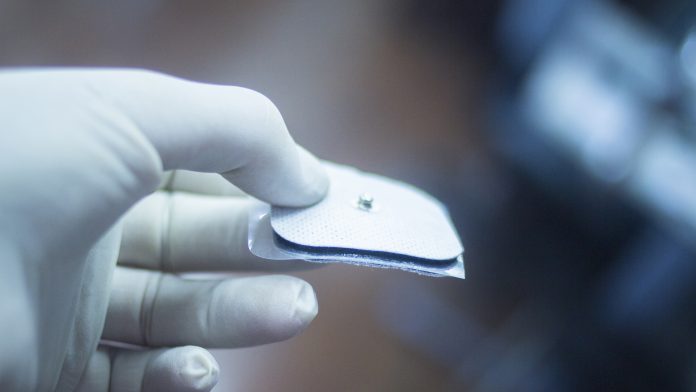
A new study has shown that a new needle-free flu vaccine patch worked for the immune system much like a traditional flu shot – without any negative side effects.
Published in the Journal of Investigative Dermatology, the research is in the early stages and has not yet been tested on humans. However, the new needle-free flu vaccine patch is an important step toward a technology that could replace needle-based vaccination methods that require administration by health care workers and biohazard waste removal.
Needle-free flu vaccine
It can be hard to transport big flu vaccine proteins across the skin as it is designed to keep things out, not let them in – many allergens can enter through the skin and be sensed by the immune system. For this new needle-free flu vaccine patch, the study looked at the research and treatment of a common inflammatory skin disease to overcome this hurdle and inform their flu vaccine patch strategy.
Benjamin L. Miller, Ph.D., corresponding author and Dean’s Professor of Dermatology at the University of Rochester Medical Center said: “Scientists have been studying needle-free vaccine approaches for nearly two decades, but none of the technologies have lived up to the hype.
“Our patch overcomes a lot of the challenges faced by microneedle patches for vaccine delivery, the main method that’s been tested over the years, and our efficacy and lack of toxicity make me excited about the prospect of a product that could have huge implications for global health.”
Lisa A. Beck, M.D., corresponding author and Dean’s Professor of Dermatology at the University of Rochester Medical Center discovered that the expression of a protein called claudin-1 helps maintain barrier strength and lessen the permeability of the skin. Claudin-1 is significantly reduced in eczema patients compared to individuals without the disease.
In past research, Beck found that decreasing claudin-1 expression in skin cells from healthy donors made the skin more permeable. Beck, Miller, and first author Matthew Brewer, Ph.D., wondered if they could use this induced permeability to get a flu vaccine virus through the skin. The key would be to disrupt the skin barrier long enough to deliver the virus, but not so long to let unwanted things in.
Improved vaccine delivery for global health
Current needle-based vaccines are effective but require medical personnel to deliver, generate biohazards (sharps) requiring disposal, and can cause patients pain and anxiety – all barriers to delivery in developing world countries, which are the areas of greatest need.
Beck said: “These countries don’t have the manpower to vaccinate entire populations. On top of that, there’s an aversion to health care in many of these communities. A needle is painful, it’s invasive, and that makes things more difficult when you are dealing with a cultural bias against preventative medicine.”
A needle-free flu vaccine could provide a non-invasive way to administer vaccines quickly and cheaply to large numbers of people.
Miller added: “If you want to vaccinate a village in Africa you don’t want to do it with needles. A patch doesn’t have to be refrigerated, it can be applied by anyone, and there are no concerns about disposal or needles getting reused.”
The team hopes to conduct human trials in the future, and believes that if the patch is effective in people it could work for diseases for which there’s already a needle-based vaccine.
























